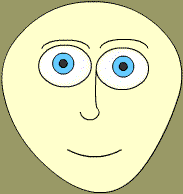Body Language/Eye Accessing Study:
Alexandria Ocasio-Cortez
This is an amazing analysis of the 2018 congresswoman, Ocasia-Cortez, reacting to the feedback her own brain is offering, as she speaks.
Watch her eye accessing, the occasional stuttering, the wiggling body motion as she tried to form what she will say next to portray a specific message and narrative. Watch her body, head and face respond with a certain "wow, he noticed me!" reaction to her mention by Trump, then her words are back on point with the message of "Trump, the enemy". Compare this with her stress as she speaks of her supposed ally, Democratic Speaker of the House, Nancy Pelosi's comment. Fascinating!
The body language expert analyzing this video makes an interesting point about how many young people have been heavily influenced by TV, as to how to present themselves. Important considerations in this Social Media age.
(Thanks to Mandi @ BombardsBodyLanguage.com for this excellent analysis.)
Body Language Study2:
Zelensky-Trump-Vance in Oval Office
This exchange went viral quickly. Trump points out Zelensky is "gambling with WW3" while Zelensky repeats his expectation of "security assurances" for Ukraine. JD Vance argues about the apparent disrespect Zelensky is arguably displaying towards America, who sent over $350 billion to his country. Why is the war still happening after 3 years and hundreds of thousands of soldiers dying? Let's see what Jesús Enrique Rosas' has to say about how this fiery exchange unfolds.
Practice Your NLP Eye Access Acuity
Move your mouse over the animated face below. As the eyes move, they access different parts of this person's neurology. Click on the face or words to start an interactive exploration of NLP eye-accessing cues and the kind of brain processing going on in these "neural quadrants." By moving the eyes and clicking your mouse, you will soon hear phrases that might be processed using the neural processing pathways in those areas of the brain. Scroll down and have fun...
Learning about NLP eye accessing cues and practicing noticing them in yourself and others, can make your rapport and communications more effective in every area of your life (business, education, public speaking, personal relationships...) Be it selling your widget to a customer, influencing a boss or colleague, communicating with a subordinate or student, or expressing more fully and clearly with a child or other loved one - this basic NLP skill will increase the effectiveness of your communications.
(If the eyes do not move as you move your mouse, you need to download the Flash 5 plug-in from Macromedia.com. For more information, click here. This is a simple and fast download - and well worth it! Remember the download location of the plug-in Installer file, should you need to run it to update your browser.)

